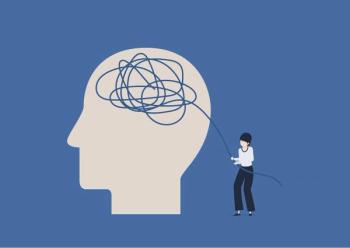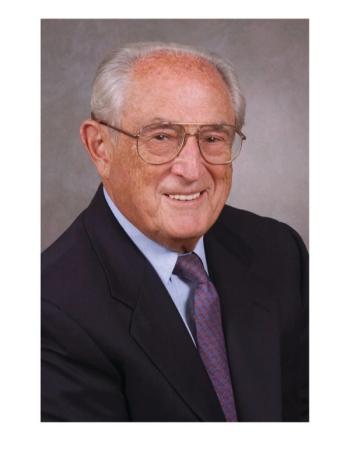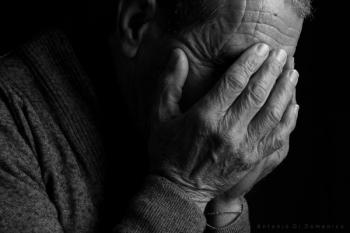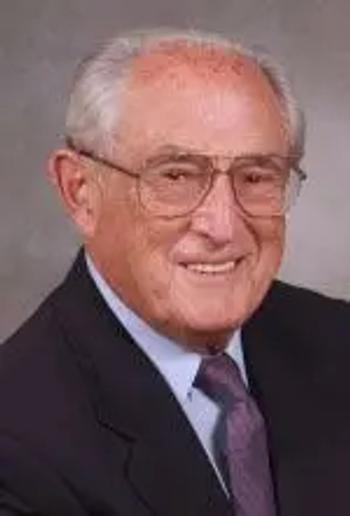
Electroconvulsive Rx: A Memoir and Essay (Part 1)
During my residency training at Harvard’s McLean Hospital from 1956-1959, the treatment of choice for all of our patients was intensive psychodynamic psychotherapy.
During my residency training at Harvard’s McLean Hospital from 1956-1959, the treatment of choice for all of our patients was intensive psychodynamic psychotherapy. The hospital had been placed under the leadership of Alfred Stanton, a psychiatrist/psychoanalyst, who had been trained at Chestnut Lodge and was an expert in the psychodynamic treatment of patients with serious mental illness. His goal was to make McLean the Chestnut Lodge of Harvard in which psychodynamic thinking would color every aspect of the patient’s hospitalization. I had been a convert to Freud since my college days, under Stanton’s tutelage we added a lesser altar to Harry Stack Sullivan’s interpersonal approach. Our therapeutic efforts had their ups and downs. My most notable down was spending 2 years, often, on my hands and knees trying to engage in conversation, a mute and depressed middle aged woman, who repeatedly tore off her clothes and lay naked under her bed. Let us call her Mrs. W.
In judging this “treatment” of Mrs. W., for which Dr. Stanton was my supervisor, it should be noted that psychopharmacology was in its infancy, psychosurgery was in bad repute (at least at McLean although it continued at our sister institution (The Massachusetts General Hospital) and at that time following Chestnut Lodge’s model none of our patients were given electroconvulsive therapy. There was also no instruction in any of the somatic therapies during my residency. McLean’s practice of not providing ECT was in sharp contrast to the surrounding private psychiatric hospitals where it was the treatment of choice and Blue Cross/Blue Shield covered the costs of inpatient stays only if accompanied by a course of ECT. A committee dominated by the surgical subspecialties set those payment standards for BC/BS in that era. Providing ECT was therefore a lucrative practice for psychiatry and at several small psychiatric hospitals it was very much the specialty. The fact that McLean did not provide ECT seemed to us a principled and ethical position. There was no scientific explanation of how it worked and no good efficacy studies. Most of us thought that it was a cruel and inhumane treatment and, back then, we would have endorsed the views still held by “survivor/victim” groups who oppose ECT and believe it has irrevocably harmed their memory.
My residency training experience certainly did not prepare me for what I encountered when I reported in August 1959 for my mandatory 2 years of military service at Fitzsimmons Army Hospital outside Denver. The Colonel in charge of the psychiatric unit prescribed a course of 20 to 25 unmodified ECT’s for virtually every soldier requiring admission to the inpatient unit. When I questioned this rigid regimen and expressed my unwillingness to participate, the Colonel informed me that I was not being asked I was being ordered and would either take my turn administering the full course of unmodified ECT or be court martialed. As I look back on my military service, I have always regretted that I did not risk being court martialed. In any event, under the Colonel’s threat, I learned what a course of 20 -25 unmodified bilateral ECT could do to a sample of approximately 100 young physically healthy men of various diagnoses.
Despite the textbooks of the era that were filled with accounts of fractured jaws, broken teeth, lacerated tongues, compressed vertebrae, and fractured limbs, none of these complications ever occurred among these physically healthy young men. Simple physical restraint and a mouth guard during the seizure averted all of these unwanted side effects. Obviously this experience exposed me to none of the orthopedic complications reported in older patients, most commonly vertebral compression fractures. But it was noteworthy that simple hands-on restraint limiting the convulsive contractions avoided all of the ghastly orthopedic complications described in the textbooks (eg, bilateral fractures of the acetabulum in young men.) Max Fink, MD, whom I consider the world’s authority on ECT, recently informed me that although there was no published study, all of the experienced ECT centers around the world had learned to use some kind of simple restraint in the 1950’s. [I emphasize this because critics of unmodified ECT administered with physical restraint, which is still in use in much of the world, rely on those early textbooks to insist that these orthopedic complications are being ignored or under-reported. More on this in my next essay-memoir.]
On the other hand it was clear that in all of these physically healthy patients after 20-25 ECT sessions, there was substantial cognitive impairment. Many of the men had severe symptoms of organic brain syndrome, some had to be fed, and some became incontinent. The onset of these symptoms was the basis for stopping at 20 ECT sessions, but all of the patients by the end of their prescribed course of treatment were disoriented as to time, person and place and had massive cognitive impairment and memory problems.
No effort was made to document the extent of the patients’ cognitive impairment or to assess the kind of memory loss. The Colonel believed that the mental impairment we saw was a temporary phenomenon that had no long term significance. I do not intend to suggest that the Colonel was either an expert on ECT or a confident clinician. In fact he was quite insecure as a clinician and it was my impression that he adhered to this regimen because some superior has taught him this approach and by the existing Army standards he was rated as a highly efficient commanding officer.
In fact by military standards, the Colonel ran a highly rated psychiatric unit. Military discipline prevailed, the wards were quiet, the patients with rare exceptions stood respectfully at the foot of their carefully made beds as the Colonel led us on the empty ritual of daily rounds. Seclusion or restraint was almost never required and the soldiers were rapidly processed and discharged from the military. According to the Colonel, all of them had benefited from this treatment.
The Colonel’s regimen of ECT did produce military order in what might have been bedlam and this “secondary gain” may have been an important incentive for the overuse of ECT. Although the Colonel never acknowledged this disciplinary benefit, he did openly maintain that his regimen prevented psychiatric malingering. This, despite the fact that almost none of our patients had advanced warning of what awaited them at the Fitzsimmons psychiatric services.
The Colonel’s practice was to hold a medical board, often within only 2 to 3 weeks of the patient’s last ECT. There the board would determine the soldier’s degree of psychiatric disability and give him a medical discharge from the Army. The medical boards gave me the opportunity to oppose the Colonel’s regimen. I took the position that within the accepted standards of psychiatry it was impossible to evaluate accurately the degree of disability of a patient so soon after a course of 20-25 ECT sessions. And I insisted that Colonel could not order me to reach such a judgment.
To my knowledge none of the other psychiatrists drafted at the completion of their residency training and stationed at Fitzsimmons had objected to either administering the full course of ECT or to participating in the medical boards at the Colonel’s request. The Colonel as it turned out was unprepared to order me to reach a medical judgment and the boards that required the judgments of 3 qualified psychiatrists were therefore delayed. It began to be apparent that some subset of the patients had in fact not been “cured” or even achieved temporary remission. Patients who would have previously been dischargeable were now manifesting significant symptoms.
The efficacy of the Colonel’s system began to break down, patients were causing disturbances and had to be transferred back to the locked ward rather than being rapidly processed for medical discharge. The morale of the staff was undermined and we were visited by Colonel Albert J. Glass, the Chief of Army psychiatry. He talked to all of us at great length, but gave no indications of his own opinions. Six weeks later, the Colonel became one the first psychiatrists assigned to Vietnam.
I soon completed my 2 years of service and was honorably discharged from the Army but without the letter of commendation that was routinely awarded to all of my colleagues. When I returned to McLean Hospital, a colleague who had taken on the care of Mrs. W. (my depressed catatonic patient) gave me his follow up. She had been mute with him as she was with me, but he had arranged for a course of 10 ECT sessions, and within weeks she was in remission and discharged from our hospital. Anecdotal evidence is particularly convincing when it is your own. And in this case my clinical experience was driven home when I unexpectedly met Mrs. W. in Harvard Square. She greeted me politely and shook my hand, and perhaps I imagined the forgiving look in her eye. It was a mutative experience and I realized that there had to be some eclectical wisdom to be found between the Colonel’s regimen and my training at McLean Hospital. What that wisdom was exactly would take me years to discover.
We had entered the psychopharmacology era and it was widely [and incorrectly] believed that the tricyclics had made ECT unnecessary. In 1962, I became the Director of Residency training at McLean Hospital and -- over some opposition - - introduced a course on “biological psychiatry.” Thirty years later, I would debate my friend and colleague Gerald Klerman in the pages of the American Journal of Psychiatry. He would argue that the Chestnut Lodge approach -- still being employed at the time -- constituted malpractice. Standards of care have changed and I would concede that by contemporary standards, my treatment of Mrs. W. was not only malpractice it was cruel and inhumane.
Newsletter
Receive trusted psychiatric news, expert analysis, and clinical insights — subscribe today to support your practice and your patients.













